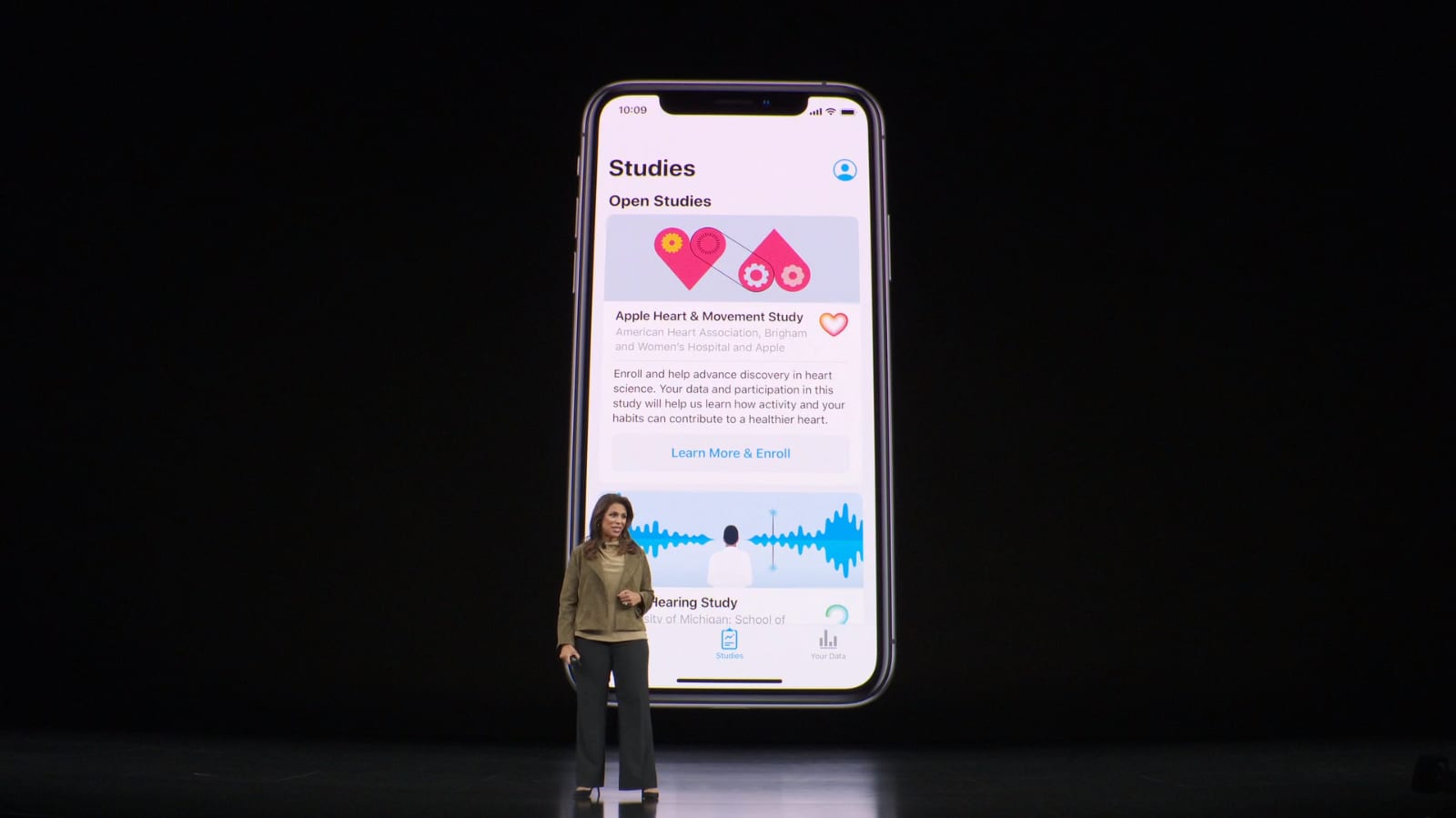
Apple's main selling point for the Apple Watch is tracking your health, including activity, sleep and certain medical conditions.
But it's not the only Apple product that can help you get in shape and stay healthy. The humble iPhone has plenty of health-tracking features as well.
You might already know that you can track your steps, for example. But the Health app built-into your iPhone can do a lot more, like tracking how long you practice mindfulness through third-party apps, determining how long you spent in bed, your walking speed and more.
Here are some examples of how the iPhone can help you get healthy:
Step tracking
The Health app can automatically track the number of steps you take in a day. It can also track the number of stairs climbed and total distance you've traveled.
- Open Settings on your iPhone.
- Tap Privacy.
- Tap Motion & Fitness.
- Turn on "Fitness Tracking."
- Open Health.
- Tap "Browse" on the bottom-right.
Choose "Activity."
Mindfulness
Apple doesn't have its own meditation app, unless you count some of the exercises in its Fitness+ subscription service, which has mindful cooldown and yoga workouts. But, it can keep track of the time you spend meditating in third-party apps like Calm or Headspace. If you install those apps you'll get a prompt to save information to Apple Health and, once you do, you can keep track of how long you meditate each day over time inside the app.
Wind Down
You need an Apple Watch to track your sleep, but the iPhone can keep track of how long you're in bed, and save that information.
It's not a great analysis of your sleep but you can get an idea of your sleep patterns and if you pick up your iPhone at night. You can turn this on by selecting "options" under the "Full Schedule & Options" menu.
The iPhone also has a "wind down" feature which automatically puts your iPhone in Do Not Disturb Mode and dims the screen. Once in that mode, you can set shortcuts on your lock screen to access meditation apps, a reading app like Kindle or Apple Books and more. I use it every night so my iPhone doesn't disturb me when I sleep.
- Open the Health app on your iPhone.
- Tap Browse on the bottom-right.
- Choose Sleep.
- Enter in the time you typically go to bed and wake up.
- Select "Full Schedule & Options" under "Your Schedule."
- Under "Wind Down" select how long prior to bed you want Wind Down to begin.
- Select Shortcuts you want your iPhone to display on the lock screen, like Headspace or Kindle.
Cycle tracking
For women, the iPhone can track menstrual cycles and predict your next period and fertile windows. You can also keep a log of your period flow level, any symptoms you might have that you want to share with your doctor and more. It also can factor in things that might affect your fertility window, like pregnancy or contraception.
- Open the Health app on your iPhone.
- Tap Browse on the bottom-right.
- Choose Cycle Tracking.
- Tap "Get Started."
Headphone audio levels
A feature called "Headphone Audio Levels" can keep track of how loud your headphone audio is and will let you know if you've listened to music too loud over the recommended limit. Listening to music at over 90 dB over four hours per week, for example, would trigger that alert.
- Open the Health app on your iPhone.
- Tap Browse on the bottom-right.
- Tap Hearing.
- Choose Headphone audio levels.
See your health records
You can keep track of the health records from your doctor visits if your physician's office supports integration with Apple Health. This lets you see all sorts of information, including immunizations, blood test results, past medical procedures and more.
- Tap your profile picture.
- Tap Health Records under Features.
- Tap "Add Account"
- Search for your hospital, network or doctor's location.
- Select your provider.
- Tap "Connect to Account."
- Log-in to your doctor's portal and allow it to access Apple Health.
Review your health checklist
Apple also has a "health checklist" built into iOS 14, which came out in September 2020.
Health Checklist will help create a medical ID on your phone that you or someone else can show to first responders. It's got vital information such as whether or not you're an organ donor, the type of blood you have, allergies and reactions, medicine you're taking, your height and weight and more. You enter in this data yourself, so you don't have to include any of it if you don't want to.
The health checklist can also help you set up the Emergency SOS, a feature on your iPhone that will automatically call emergency services if you tap the side button of the phone 5 times in rapid succession. If you press and hold the button, it will also send a message to any contacts you add in Emergency SOS. I have my immediate family members set up in mine, for example.
https://ift.tt/2NfC12b
Bagikan Berita Ini














0 Response to "How to use your iPhone to get in shape and stay healthy - CNBC"
Post a Comment